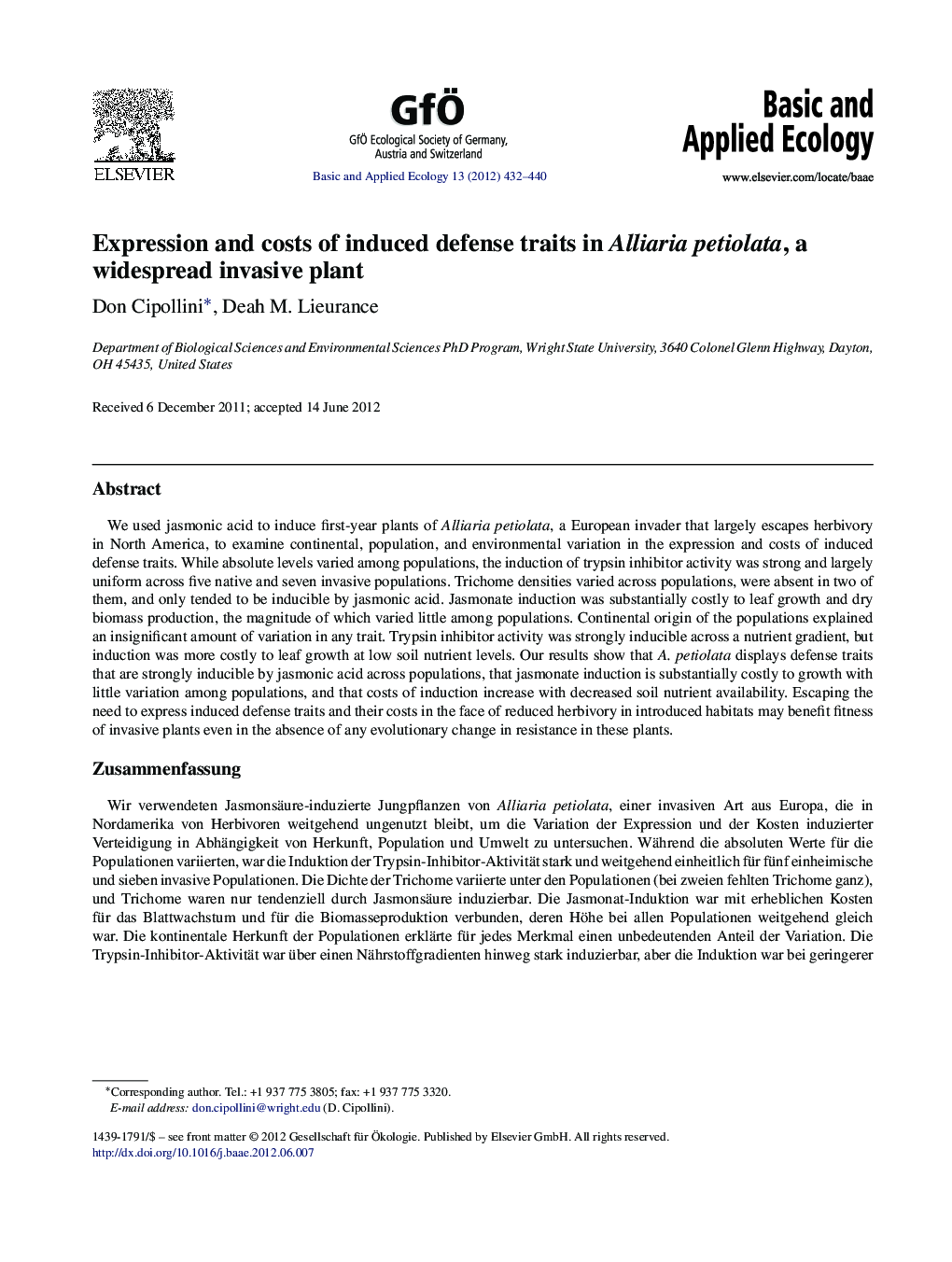| Article ID | Journal | Published Year | Pages | File Type |
|---|---|---|---|---|
| 4384228 | Basic and Applied Ecology | 2012 | 9 Pages |
We used jasmonic acid to induce first-year plants of Alliaria petiolata, a European invader that largely escapes herbivory in North America, to examine continental, population, and environmental variation in the expression and costs of induced defense traits. While absolute levels varied among populations, the induction of trypsin inhibitor activity was strong and largely uniform across five native and seven invasive populations. Trichome densities varied across populations, were absent in two of them, and only tended to be inducible by jasmonic acid. Jasmonate induction was substantially costly to leaf growth and dry biomass production, the magnitude of which varied little among populations. Continental origin of the populations explained an insignificant amount of variation in any trait. Trypsin inhibitor activity was strongly inducible across a nutrient gradient, but induction was more costly to leaf growth at low soil nutrient levels. Our results show that A. petiolata displays defense traits that are strongly inducible by jasmonic acid across populations, that jasmonate induction is substantially costly to growth with little variation among populations, and that costs of induction increase with decreased soil nutrient availability. Escaping the need to express induced defense traits and their costs in the face of reduced herbivory in introduced habitats may benefit fitness of invasive plants even in the absence of any evolutionary change in resistance in these plants.
ZusammenfassungWir verwendeten Jasmonsäure-induzierte Jungpflanzen von Alliaria petiolata, einer invasiven Art aus Europa, die in Nordamerika von Herbivoren weitgehend ungenutzt bleibt, um die Variation der Expression und der Kosten induzierter Verteidigung in Abhängigkeit von Herkunft, Population und Umwelt zu untersuchen. Während die absoluten Werte für die Populationen variierten, war die Induktion der Trypsin-Inhibitor-Aktivität stark und weitgehend einheitlich für fünf einheimische und sieben invasive Populationen. Die Dichte der Trichome variierte unter den Populationen (bei zweien fehlten Trichome ganz), und Trichome waren nur tendenziell durch Jasmonsäure induzierbar. Die Jasmonat-Induktion war mit erheblichen Kosten für das Blattwachstum und für die Biomasseproduktion verbunden, deren Höhe bei allen Populationen weitgehend gleich war. Die kontinentale Herkunft der Populationen erklärte für jedes Merkmal einen unbedeutenden Anteil der Variation. Die Trypsin-Inhibitor-Aktivität war über einen Nährstoffgradienten hinweg stark induzierbar, aber die Induktion war bei geringerer Nährstoffversorgung mit höheren Kosten für das Blattwachstum verbunden. Bei geringem Herbivorendruck im Invasionsgebiet der Notwendigkeit induzierter Verteidigung zu entgehen und deren Kosten zu vermeiden, könnte die Fitness von invasiven Pflanzen positiv beeinflussen–sogar, wenn es keine evolutiven Veränderungen in der Verteidigung dieser Pflanzen gegeben hat.
